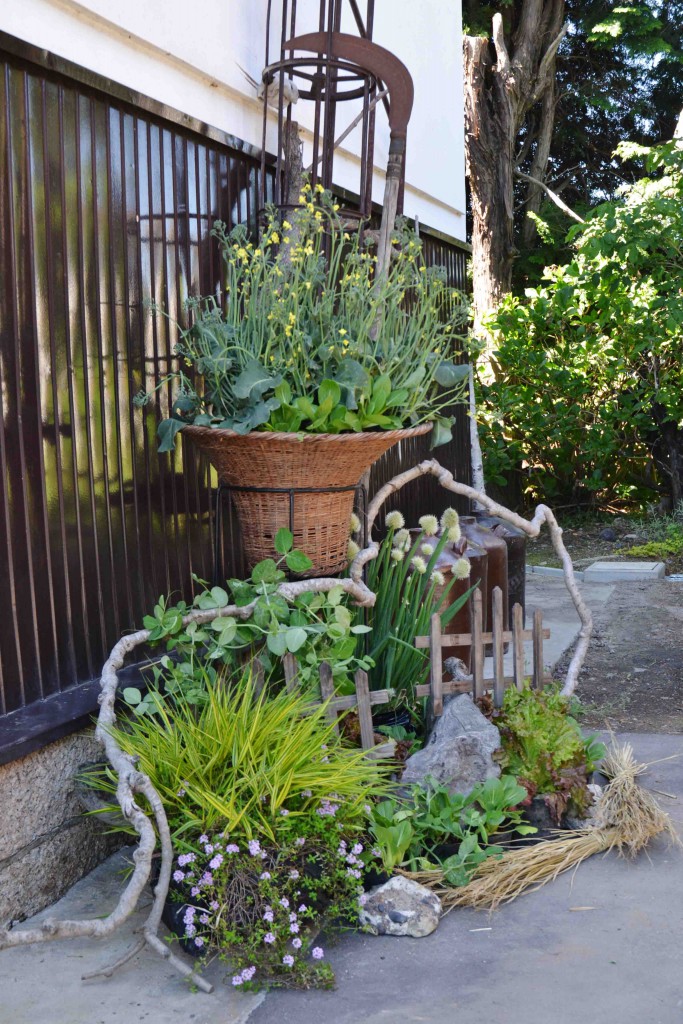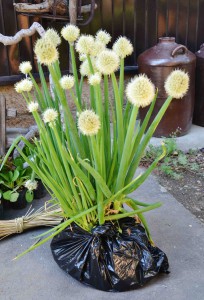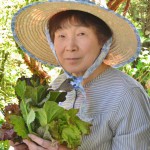
From spring to early summer: changing of seasons in highland
Containers and tools: wooden frame (rice paddy marker), long grass sickle, driftwood, gardening fence, etc.
Vegetables and plants: red-leaf lettuce, small pak-choi, spring onions, garden peas, etc.
<“Noh no Ikebana” is an art of arranging agricultural products together with agricultural implements and other familiar instruments. It’s a type of Ikebana but mainly for farmers. The series “Noh no Ikebana” will show you how to best feature the materials and containers you choose, with the help of fans of this style of Ikebana nationwide. >

Use a plastic bag to keep roots in the soil. The use of a plastic bag is also recommended when you are arranging leaf vegetables in a container.
Good thing about leaf vegetables is freshness. They are perfect materials for expressing power and dynamics of agricultural products and beauty of rich colorful farmland. As they come in various colors and shapes, you can try different combinations or choose to use only one kind in a bundle.
Chose the materials by paying attentions to not only their shapes and colors but also their difference in the stage of development and seasonal changes. Take colors for example. Young buds are yellow green which is very different from dark green of matured leaves. Familiar vegetables such as asparagus and spinach can be very interesting ikebana materials if you leave them in a garden or farmland until they bloom and produce seeds as they look very different from what you always
see as vegetables.
When arranging them, make sure to keep the leaves fresh. If you are arranging cut vegetables, make sure to do mizuage (a method to encourage water absorption) on the day before you arrange them. While enjoying the arrangement, change water or cut the end of the stems under water to preserve the life of your materials.
One of the good methods is to arrange them without cutting their roots. You can use them in a small pot or put them in a plastic bag with the soil in order to keep them alive and always fresh. After you enjoyed the arrangement, you can put them back to the farmland or your garden, too. It will make it easier if you grow some leaf vegetables in a planter or pot in your garden.
I have planters of small leaf vegetables of all sorts of shapes and colors in my garden. They look great and I can eat them when they are big enough. I can enjoy them twice!



